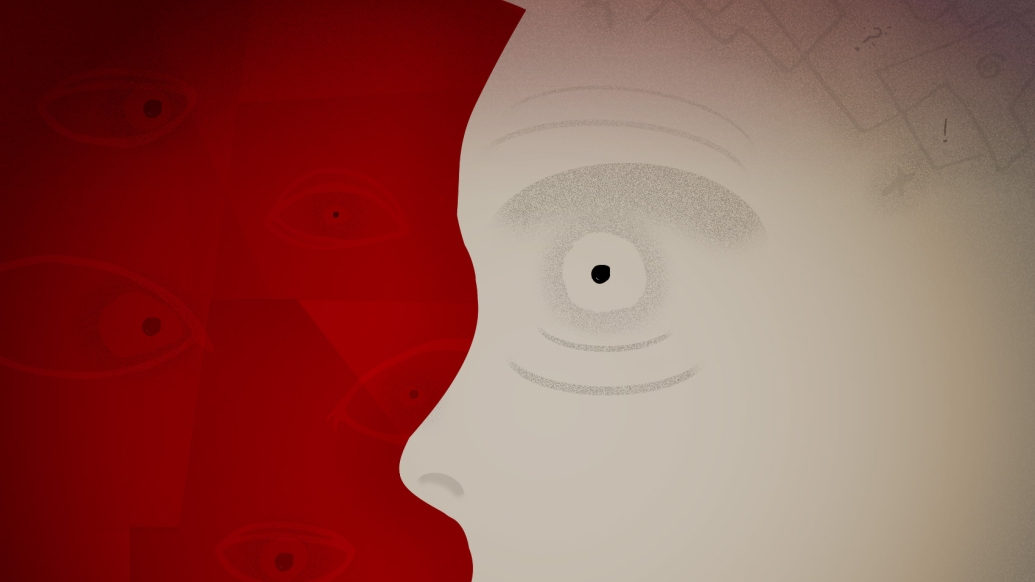Feelings of fear, dread or unease can be paralyzing. Identifying your symptoms — and knowing help is available — is key to recovery
7:00 AM
Author |

This article was updated on June 27, 2023.
When you feel a sudden rush of nerves or high emotion, it's likely that your body responds in turn. Sweating, shakiness or feelings of nausea, among other things, might occur.
MORE FROM MICHIGAN: Sign up for our weekly newsletter
Such discomfort, particularly if the sensations are new, could prompt a person to ask: Am I experiencing a panic attack? Or is it an anxiety attack?
But that's not quite the right question. It's likely you're experiencing either anxiety or a panic attack.
"They're very different emotional conditions," said Ricks Warren, Ph.D., a clinical professor of psychiatry at the University of Michigan.
Anxiety is a condition defined as excessive, persisting, difficult to control worries over an imminent event such as death or illness, or even minor events such as being late for an appointment or other uncertain outcomes. Symptoms include fatigue, hypervigilance, restlessness and irritability — and are often chronic.
Panic attacks, on the other hand, are short bursts of intense fear often marked by increased heart rate, chest pain, lightheadedness or shortness of breath. Typically lasting fewer than 30 minutes, they could occur once or repeatedly — sometimes without apparent reason. These episodes can send patients to the emergency room, as they are sometimes mistaken for a heart attack.
Warren explains more below.
What is the difference between a panic attack and anxiety?
Warren: Anxiety is basically what we experience when we are worrying about some future event — anticipating a bad outcome that might happen. It's often involved with muscle tension and a general feeling of uneasiness. And it usually comes on gradually.
A panic attack is different. It's associated with a very abrupt onset of intense fear because of a sense of threat happening right now, the fight-or-flight response that we're hardwired to have in order to deal with the perception of immediate danger. It sets off that alarm.
SEE ALSO: How Diet Influences Mood and Mental Health
When might one or the other occur?
Warren: So if you're walking down a dark alley, you are probably thinking that there could be potential danger; that anxiety of anticipation, the feeling in your stomach, the elevated heart rate. But if you're walking down that alley and somebody jumps out with a knife, then you're likely to have a panic attack — an overwhelming urge to escape a situation that is dangerous.
Panic attacks also can be triggered by subtler cues, like certain bodily sensations. A person could have a pain in the chest and interpret that as a heart attack. Or they feel lightheaded and think they're going to pass out or are having a stroke.
How do our bodies decide which reaction is appropriate?
Warren: Biologically, panic attacks are associated with the autonomic nervous system and the amygdala — places designed to detect threat and danger. And anxiety is associated with the prefrontal cortex, which has to do with planning and anticipating.
Could both conditions occur at once?
Warren: Yes. A person might be really anxious about going to a party. Sometimes, then, when they go into those situations, they'll have a panic attack on top of the anxiety because they perceive the situation as potentially dangerous psychologically: Are they going to judge me?
Are certain individuals more susceptible? Which condition is more common?
Warren: People are hardwired to experience both anxiety and panic attacks. Some are more prone to worry and anxiety because they have a very sensitive nervous system. If they grow up with others who are worriers, they can learn to worry.
Clinically, we probably see more patients dealing with anxiety than panic attacks. That's because anxiety is so much a part of people's normal emotional lives. They can feel anxious in a lot of different situations.
How do you help affected patients?
Warren: With anxiety to the point where it's part of a disorder — let's say generalized anxiety disorder, mostly characterized by anxiety and worry about a whole bunch of different situations — we would treat it by teaching a patient about the role of worry in creating the symptoms and how to manage the worry. That sometimes involves challenging unrealistic thoughts or working to increase one's ability to tolerate uncertainty, which is a big part of anxiety.
For the socially anxious, we usually come up with a hierarchy from the least- to most-scary types of situations and systemically get them to go out and test their fears of what might happen which is usually that they will be judged.
With panic attacks, we might show them a diagram and explain the fight-or-flight response; their mind or body is trying to help them. If you've had a panic attack that came out of the blue, you might become afraid of lightheadedness and avoid activities that spur adrenaline. So we might hyperventilate for a minute in a controlled way to get to the point where they're not afraid of their own bodily sensation. We work on internal avoidance of those cues that become scary, and desensitize them.
It doesn't mean a patient will never be anxious again, but there is good evidence that they can get over these conditions if they engage in evidence based treatment.

Explore a variety of health care news & stories by visiting the Health Lab home page for more articles.

Department of Communication at Michigan Medicine
Want top health & research news weekly? Sign up for Health Lab’s newsletters today!





